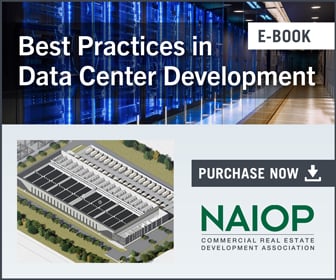Intelligent Security Strategies Can Support Smart Buildings

Interconnected security systems help make for safer, more efficient facilities.
Systems integration is the technology trend that is expected to have the biggest impact on the implementation of smart cities and buildings during the next five years, according to Johnson Controls’ second annual Smart Cities Indicator Survey. With benefits that include greater sustainability, mobility, accessibility, resiliency and transparency, smart buildings are taking center stage.
For many building and business owners, systems integration is a gateway into improved security strategies —such as more efficient surveillance, access control and asset monitoring. It’s essential for owners to understand how connected technologies and applications, when properly implemented to help ensure more secure and efficient facilities for the future, can positively affect their properties and the people who live, work and play inside of them.
Smart Steps to Connected Buildings
To begin the systems-integration process, building owners should assess the foundational elements of their security and building systems to understand where connectivity can improve their safety strategy. In the planning phase, one common misconception is that developing a holistic approach to facility security by integrating formerly siloed building systems is too expensive. However, enlisting a systems integrator can make a connected building strategy a reality, all while staying within budget — and potentially even saving money in the long run.
A partnership with a systems integrator starts by conducting an audit of current infrastructure to gauge its efficiencies and areas that need improvement. Then, taking the unique needs, goals and budget restrictions of a building or business into consideration, the integrator can pinpoint the specific opportunities to consolidate systems and add new technologies if necessary. Once the integrator completes a project, the job doesn’t end there. They also manage and maintain systems throughout their lifespan, relieving building owners of the responsibility.
The ability to analyze data more effectively is another benefit of proactively working with a systems integrator. As systems are connected, so are their unique sets of data, which were once siloed and not as useful to building owners. The integration of data from different building systems can help provide more actionable insights to help boost security within a facility, ultimately leading to a safer and more comfortable environment for occupants.
The Role of Integrated Security Solutions
The 2019 Security Megatrends report, by the Security Industry Association (SIA), calls the creation of smarter environments one of the major trends in the coming year. Security technologies are expected to be a significant part of intelligent buildings, and systems integration plays a key role in gathering data to help ensure a building is safe and secure. Buildings that are outfitted with advanced security systems — like video surveillance, access control and occupancy sensors — can help increase operational efficiencies by using systems integration to collect data. Integration enables the systems to “communicate” and work in tandem to provide real-time insights.
For example, the integration of video analytics and access control can be used to monitor the flow of occupants within a building while preventing unauthorized access to restricted locations. Facility safety can be further enhanced when sensors are connected to emergency communications systems, alerting first responders to the location and helping them determine the fastest route to the threatened area through the facility.
In addition to assisting in emergency situations, the data compiled from advanced security technologies can be analyzed by systems integrators to help facility owners and managers better understand how their infrastructure is operating and make improvements based on the information gathered. If energy usage is rising, integrators can suggest fashioning video analytics and occupancy sensors to a building’s lighting infrastructure and HVAC controls. It enables the lighting and HVAC controls to turn on or off in specific areas based on occupancy. This approach not only helps to ensure security throughout a facility, but also provides insights into how the building is being used to help save on energy costs.
Understanding the value of connecting different security systems, as well as how they can be integrated with other building systems, is a key component in developing a smarter, safer facility. Whether installing new solutions onto existing infrastructure or upgrading solutions to ensure compatibility, systems integration presents a variety of cost options to fit the specific needs of a building or business. As the desire to create smart facilities continues to grow, it’s crucial that building and business owners don’t forget about their baseline systems; they can be a bigger help to developing a more intelligent building than some may realize.
Facilities that are successful in their smart-ready journey will be those that view building components holistically and enhance their efficiencies.
Hank Monaco is the vice president of marketing with Johnson Controls, Building Solutions North America.




